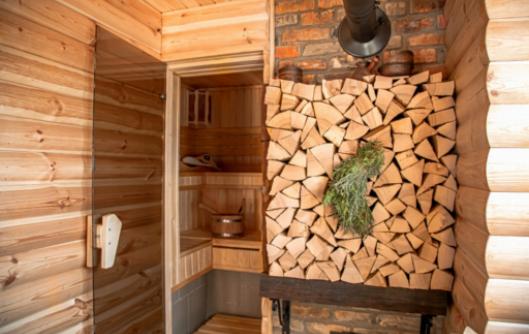Identifying and Solving Smoke Backflow Problems
22 November 2025 by Mila R.Having a wood-burning sauna can provide a unique and authentic sauna experience, but it also comes with its own set of challenges, such as smoke backflow issues. Proper ventilation is key to preventing and minimizing smoke backflow in your wood-burning sauna. In this article, we will discuss tips for properly ventilating your sauna, common mistakes to avoid, troubleshooting smoke backflow problems, and implementing solutions to ensure you can enjoy a relaxing and smoke-free sauna experience.

Tips for Properly Ventilating a Wood-Burning Sauna to Prevent Smoke Backflow
Proper ventilation is key to preventing smoke backflow in a wood-burning sauna. Here are some tips to help you ensure that your sauna is properly ventilated:Install a chimney with a proper flue size to allow for adequate airflow.
Position the chimney at the highest point possible to maximize draft and reduce the likelihood of smoke backing up into the sauna.
Regularly clean and inspect the chimney to prevent blockages that can impede airflow.
Ensure that the sauna door has proper seals to prevent smoke from escaping into the room.
Consider installing additional ventilation, such as air vents or a ventilation fan, to improve airflow and prevent smoke backflow.
Use dry, seasoned wood for your sauna stove to reduce the amount of smoke produced.
Avoid overloading the stove with wood, as this can lead to inefficient combustion and increased smoke production.
Monitor the sauna temperature and adjust airflow as needed to maintain proper combustion and prevent smoke backflow.
Consider consulting a professional for assistance with designing and installing a ventilation system for your wood-burning sauna.
Common Mistakes to Avoid When Using a Wood-Burning Sauna to Minimize Smoke Backflow
When using a wood-burning sauna, there are some common mistakes that can contribute to smoke backflow issues. By avoiding these mistakes, you can minimize the likelihood of experiencing problems with smoke backflow in your sauna. One common mistake to avoid is overloading the stove with too much wood. While it may be tempting to create a roaring fire for a hotter sauna experience, adding too much wood can lead to incomplete combustion and an increase in smoke production. Instead, aim to add smaller amounts of wood at a time and allow it to burn efficiently. Another mistake to avoid is using damp or unseasoned wood in your sauna stove. Wet wood will not burn as efficiently, leading to increased smoke production and potential backflow issues. Make sure to use dry, seasoned wood for the best results. Additionally, failing to properly open the damper or air vents on your sauna stove can also contribute to smoke backflow. Inadequate ventilation can lead to a buildup of smoke inside the sauna, so be sure to adjust the airflow as needed to maintain proper combustion. Lastly, not cleaning the chimney or stove regularly can also result in smoke backflow problems. Buildup of creosote and other debris can obstruct proper airflow and lead to smoke backing up into the sauna. Make sure to schedule regular cleanings and maintenance to keep your sauna stove operating efficiently and prevent smoke backflow issues.How to Troubleshoot Smoke Backflow Issues in Your Wood-Burning Sauna
As a human writer who is an expert in DIY home and garden, I understand the importance of properly troubleshooting smoke backflow issues in a wood-burning sauna. When experiencing smoke backflow problems, it is crucial to identify the root cause in order to implement effective solutions. Here are some steps to troubleshoot smoke backflow issues in your wood-burning sauna:Check the airflow: Insufficient airflow is a common cause of smoke backflow in wood-burning saunas. Make sure that the air vents are open and not blocked, allowing proper ventilation for the smoke to escape.
Monitor the temperature: If the temperature inside the sauna is too high, it can lead to smoke backflow. Adjust the temperature settings accordingly to ensure a comfortable and safe environment for using the sauna.
Inspect the chimney: A blocked or dirty chimney can obstruct the flow of smoke, causing it to backflow into the sauna. Regularly inspect and clean the chimney to prevent this issue from occurring.
Use dry firewood: Wet or damp firewood can produce excessive smoke, leading to backflow problems in the sauna. Make sure to use dry and properly seasoned firewood to reduce smoke production.
Check the seals: Damaged or worn seals around the door of the sauna can allow smoke to escape into the room. Inspect the seals and replace them if necessary to prevent smoke backflow. By following these troubleshooting steps, you can effectively identify and address smoke backflow issues in your wood-burning sauna, ensuring a safe and enjoyable sauna experience for yourself and your guests.